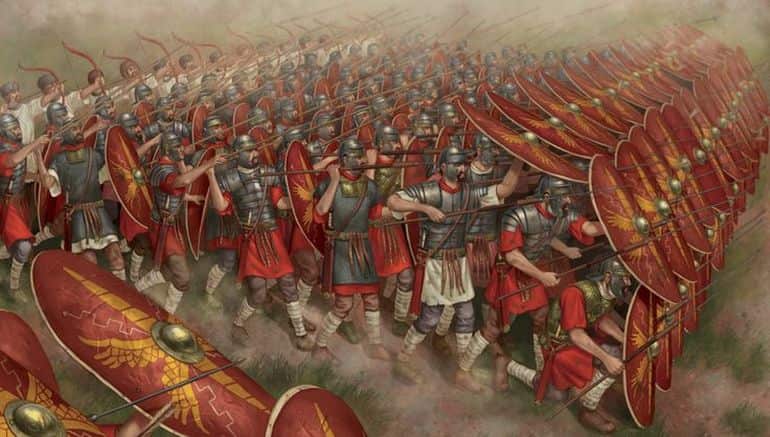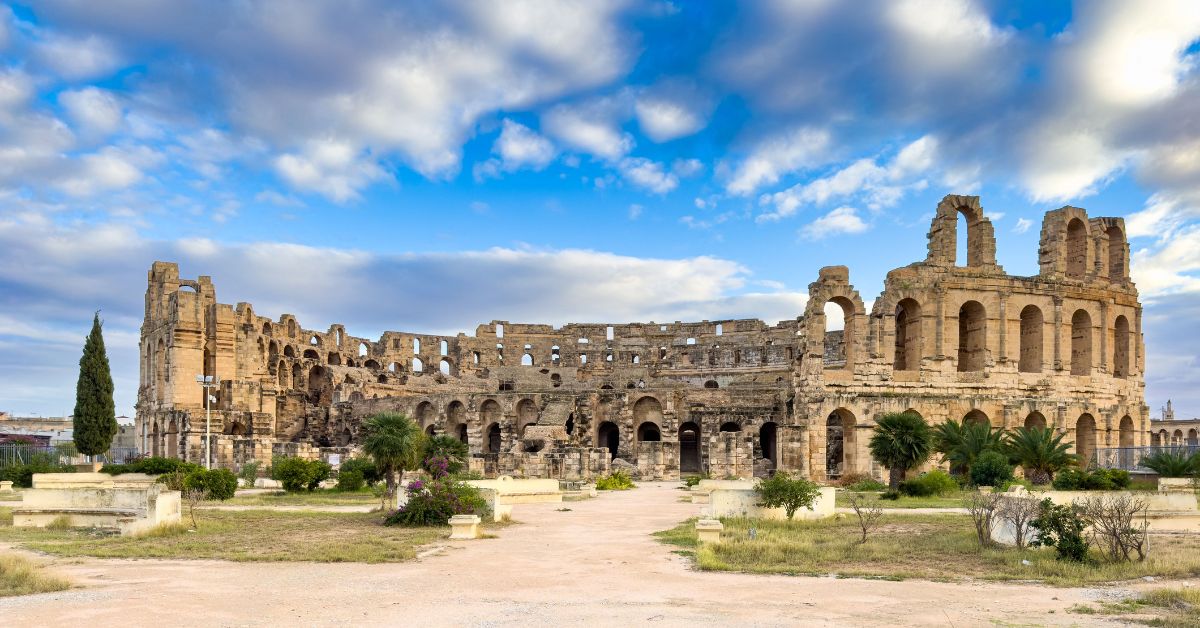The Roman Empire, with its legendary duration and influence, is a fascinating subject. It began in 753 BC and spanned centuries, maintaining control over significant territories in the Mediterranean world until 1453. This empire’s longevity is unmatched by modern nations, which often last only a few decades. Key to Rome’s survival was its strategic geographic placement. Controlling the Mediterranean Sea allowed for efficient trade and communication, which was crucial for an empire that connected diverse cultures and economies.
Political and cultural institutions also played a significant role in holding the empire together. The Roman strategy of integrating local leaders and offering them citizenship helped maintain loyalty across vast territories. Despite its challenges, like succession issues, the imperial system managed to establish order and satisfy its governing elite. Even as late as the Byzantine era, the identity of being Roman intertwined with religion and loyalty to the emperor. This combination of geography, political strategy, and cultural unity highlights why the Roman Empire’s legacy continues to endure.
Key Takeaways
- Geography was pivotal to the Roman Empire’s longevity.
- Political integration of local elites strengthened loyalty.
- Cultural unity sustained the empire’s influence over time.
The Extraordinary Durability of the Roman Empire
The Roman Empire’s remarkable duration can be largely attributed to its strategic use of geography. The Romans maintained control over the entire Mediterranean coastline for 500 years, using it as a major hub for trade and communication. This body of water, with its natural harbors, predictable trade winds, and lack of tides, facilitated efficient and affordable sea travel compared to overland routes. The Mediterranean functioned like an ancient superhighway, moving goods and people with ease.
Another key to the empire’s endurance was its sophisticated political and cultural strategies. Rome expertly integrated local elites into its administration by offering Roman citizenship and responsibilities in tax collection. These roles granted wealth and prestige, helping to secure their loyalty. Over time, the once-defeated leaders’ descendants became part of the Roman Senate, illustrating the empire’s ability to adapt and include diverse groups into its fold.
The Roman state also relied on a robust military structure. Created by Augustus, the professional army was unique for its time and became a major support pillar for the emperors. The soldiers, who understood who paid their wages, offered loyalty and helped maintain order across the provinces. This military presence required a large portion of the imperial budget but provided crucial stability.
A uniform elite culture further contributed to the empire’s longevity. In both the Latin-speaking West and the Greek-speaking East, upper-class families shared educational experiences and values. This cultural cohesion fostered a unified perspective on governance and law, reinforcing order and justice as represented by the emperor.
Besides these elements, the Roman Empire benefited from fortunate circumstances and critical decisions that extended its power. Periods of instability in surrounding regions and the long reign of capable leaders like Augustus played crucial roles. The empire’s extended history and its ingrained place in the collective mindset of its people helped maintain its significance long after its decline. The Roman Empire’s legacy continues to influence the modern world and endure in various forms.
Geography’s Influence on Sustaining the Roman Empire
Control of the Coastal Regions of the Mediterranean
The Roman Empire’s success was closely linked to its control of the Mediterranean coastline. For five hundred years, the vast stretches of coast were under Roman rule. Many of the largest Roman cities thrived along these shores, benefitting from easy access to the sea. This control provided the Romans with numerous natural harbors that enhanced their naval capabilities and facilitated the movement of goods and people.
Commerce and Sailing on the Ancient Waterway
The Mediterranean Sea served as a vital network for trade and travel, much like a highway of the ancient world. With predictable winds and minimal tides, navigation was relatively straightforward. Sailing ships could move goods much faster and more cheaply than land routes allowed. Even though most of the trade was local, the entire sea basin formed an interconnected economic zone. Roman cities and businesses participated in this extensive trade network, exchanging goods like olive oil and fish sauce across vast distances.

Cultural and Political Influences
Regional Loyalty and Roman Citizenship
Throughout history, Roman leadership used clever strategies to gain the loyalty of people in its provinces. Early on, Roman citizenship was extended to selected leaders and influential figures in different towns. This strategic move was essential for securing their support. By gaining citizenship, these provincial leaders felt a stronger bond with the empire, which helped in unifying diverse regions under a common identity.
Involvement of Provincial Leaders
The Roman Empire’s long-lasting strength also came from its approach to integrating local elites into its governing system. These elites were tasked with responsibilities like tax collection, which brought them great influence and wealth. Within a few generations of Rome’s expansion into regions like Gaul, descendants of the conquered leaders were serving in important positions, including the Roman Senate. This inclusion and elevation of local leadership ensured that the central government could maintain control while respecting local customs and power dynamics.
Long-Lasting Features of the Roman Empire
The Role of the Emperor
The emperor played a central role in the power and stability of the Roman Empire. From Augustus’s time, the emperor became the focal point of authority, blending elements of republican tradition with imperial power. This position allowed emperors to act as both political leaders and living symbols of Roman unity. The presence of the emperor was felt through coins, statues, and inscriptions, which kept the people connected to their ruler, even if they never saw him in person. The emperor also engaged in rituals that linked governance with religion, reinforcing a sense of order and continuity across the empire.
Military Rule and a Dedicated Army
The Roman Empire was fundamentally a military state. The professional army established by Augustus was a unique feature in a world where temporary militias were more common. Despite its financial demands, consuming over half of the empire’s budget, this standing army provided reliable protection against threats and maintained order. The soldiers’ loyalty was secured through regular pay and the knowledge that their stability depended on the emperor’s leadership.

Within the empire, there existed a consistent culture shared by the elite classes. This cultural uniformity was evident in both the Latin-speaking West and the Greek-speaking East. Wealthy families educated their children in similar schools, teaching them to appreciate the same classical literature and public virtues. This shared cultural background led to a collective identity among influential provincials, who often prioritized justice and order. These shared values supported the empire’s stability, as the elite generally aligned their interests with those of the emperor and the state.
Lucky Breaks and Favor from Above
Advantageous Times in History
During certain periods, the Roman Empire was particularly fortunate. Notably, in the second and first centuries BC, the weakening of the Hellenistic kingdoms made it easier for Rome to take control of the Eastern Mediterranean. These shifts in power were crucial in shaping the future of the Roman Empire.
Establishment of the Imperial Framework
The long reign of Augustus, which lasted over 40 years, was key in setting up the Roman imperial system. His extended leadership provided stability and helped solidify the government structure that would endure for centuries.
Key Moments Ensuring Lasting Influence
Some pivotal events played significant roles in the Empire’s endurance. For instance, in 718 AD, a particularly harsh winter helped fend off invaders from Constantinople, allowing the Byzantine Empire to continue for many more years. These critical moments often seemed like divine interventions that contributed to the Empire’s persistent influence.

Continuing Impact of the Roman Empire
The Roman Empire had a vast expanse that spanned from 27 BC with Augustus to 1453 with Constantine XI. This remarkable longevity is unmatched by any other empire. The secret behind its endurance was mainly due to its strategic geographic location. The Romans had control over the entire Mediterranean coastline for hundreds of years, and major cities were established along these shores. During warmer months, the Mediterranean was bustling with various ships, from small fishing boats to massive grain carriers, thanks to its many natural harbors and predictable winds.
The Mediterranean acted as an efficient trade route, connecting regions and facilitating brisk trade. This unified economic zone enabled the exchange of goods like olive oil from Spain and fish sauce from places as remote as Spain, reaching different parts of Italy and even southern France.
Politically, the Empire integrated local elites into its structure, granting them Roman citizenship and the responsibility of tax collection. This system allowed provincials to gain influence and prosperity, exemplified by how descendants of conquered leaders later joined the Roman Senate. The position of the emperor was a central part of the Empire’s stability. Augustus’s imperial system, although built on shaky pseudo-republican foundations, was more stable than the chaotic days of the late Republic. This system satisfied aristocratic ambitions, ensured provincial management, and maintained the emperor as a symbolic figurehead to millions.
The Roman military also played a crucial role. Augustus formed a professional army, which was costly but invaluable. This permanent military secured the Empire’s borders and maintained internal order, lending steadfast support to the emperors. Over time, being Roman became synonymous with specific cultural traits, particularly in the later Byzantine period when it was closely linked with Orthodox Christianity.
Despite its complex governance and military expenditure, the Roman Empire maintained a unified elite culture. Wealthy families across the Empire educated their children similarly, instilling common values and shared expectations of governance. This cultural cohesion, alongside political and military strategies, contributed to the Empire’s unmatched endurance. Thus, the Roman Empire is remembered for its remarkable ability to persevere through changing times and challenges.
